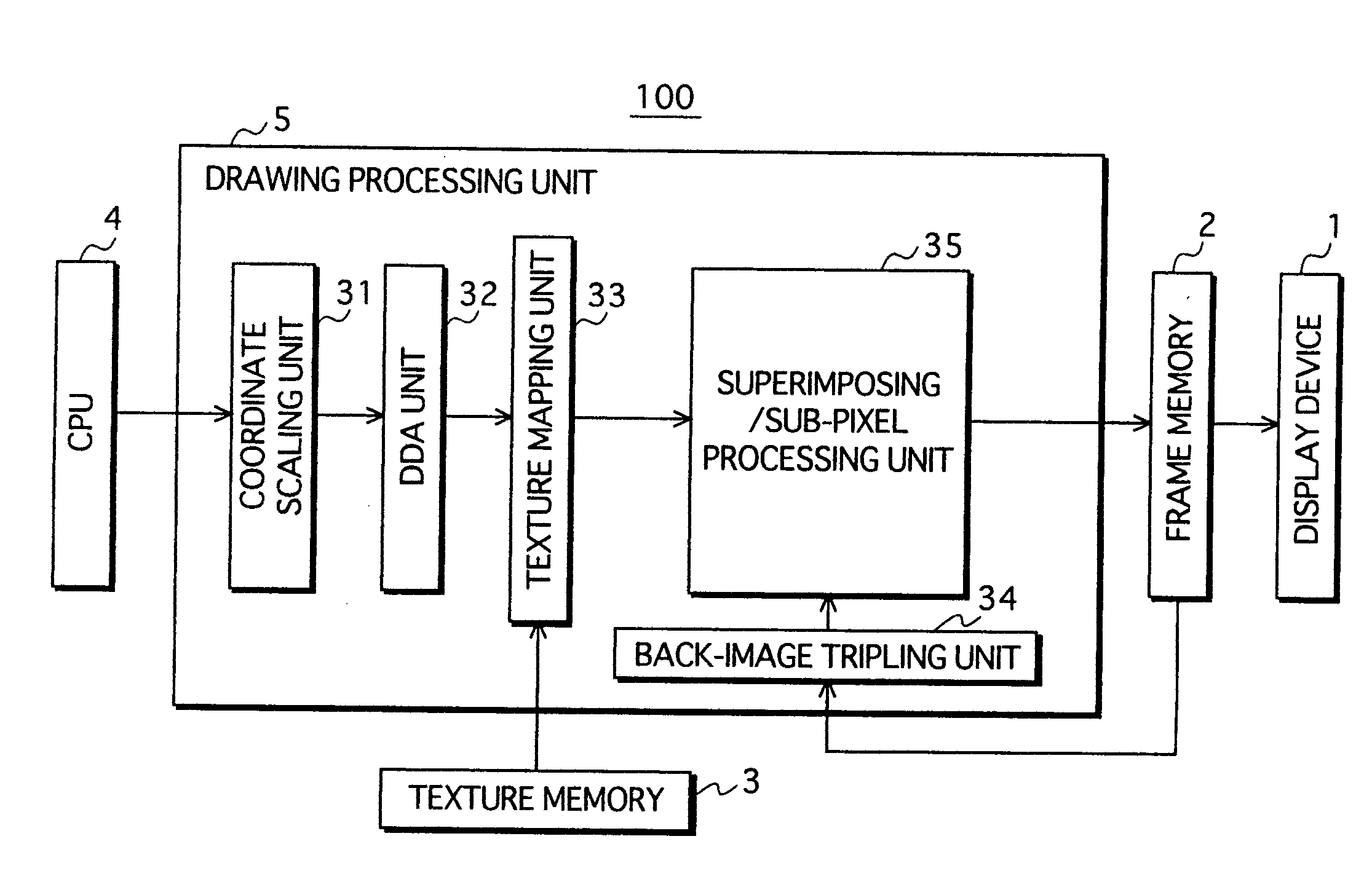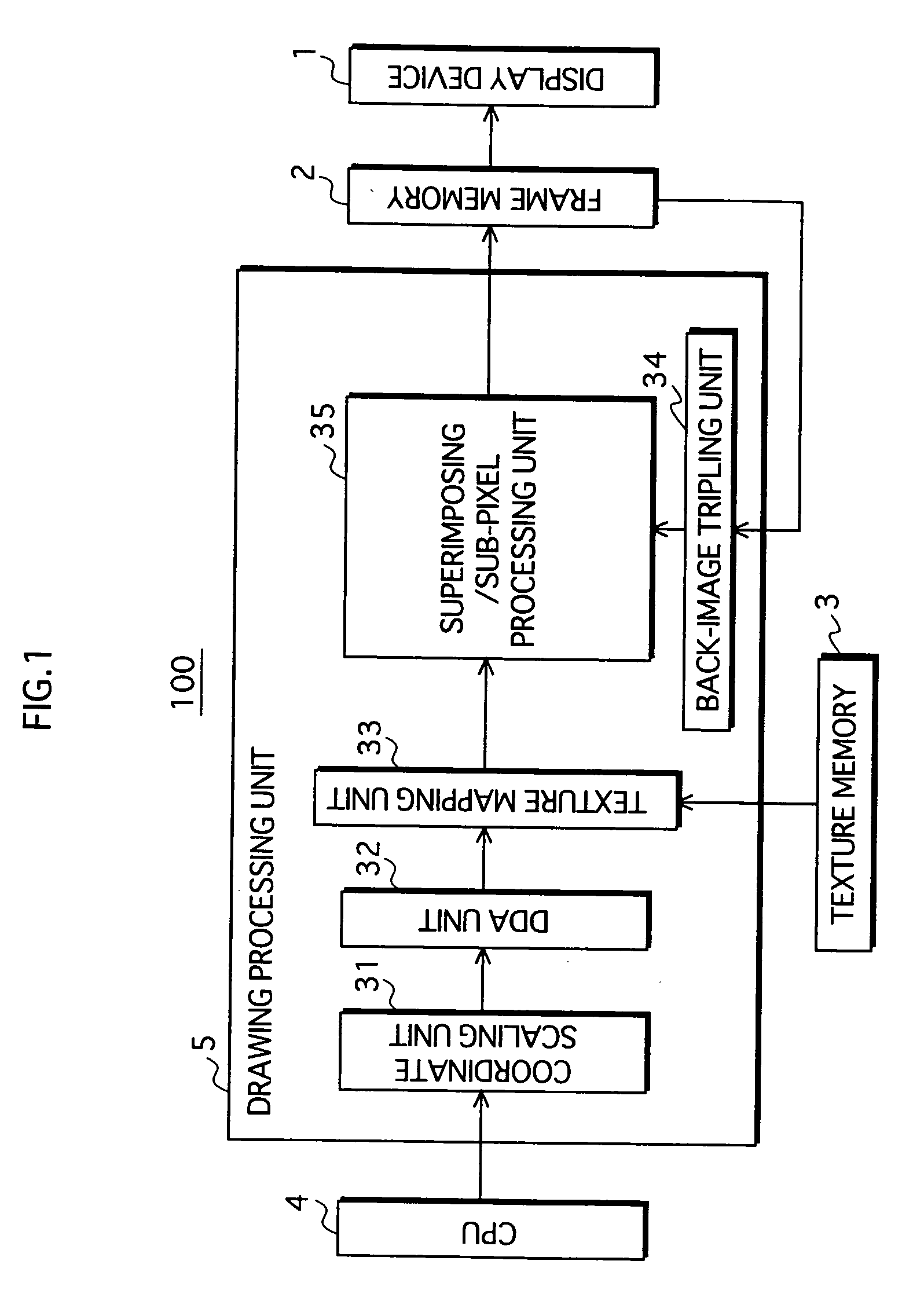Display apparatus, method and program
a technology of display apparatus and display device, applied in the field of display device, method and program, can solve the problems of image deterioration, image deterioration, image deterioration, and oblique lines in characters, photographs or complicated drawings
- Summary
- Abstract
- Description
- Claims
- Application Information
AI Technical Summary
Benefits of technology
Problems solved by technology
Method used
Image
Examples
embodiment 2
[0162] Embodiment 2
[0163] General Outlines
[0164] In Embodiment 1, the display apparatus 100 judges on the necessity of the filtering process based on the dissimilarity level of each sub-pixel to the surrounding sub-pixels in the front image so that the area of the composite image that overlaps the back image and is subject to the filtering process is limited to a small area. In Embodiment 2, the display apparatus varies the degree of the smooth-out effect provided by the filtering process according to the dissimilarity level of each sub-pixel to the surrounding sub-pixels in the front image, for a similar purpose of reducing the accumulation of the smooth-out effect to provide a high-quality image display with the accuracy of sub-pixel.
[0165] Construction
[0166] FIG. 13 shows the construction of the display apparatus 200 in Embodiment 2 of the present invention. As shown in FIG. 13, the display apparatus 200 has the same construction as the display apparatus 100 except for a superimp...
PUM
 Login to View More
Login to View More Abstract
Description
Claims
Application Information
 Login to View More
Login to View More - R&D
- Intellectual Property
- Life Sciences
- Materials
- Tech Scout
- Unparalleled Data Quality
- Higher Quality Content
- 60% Fewer Hallucinations
Browse by: Latest US Patents, China's latest patents, Technical Efficacy Thesaurus, Application Domain, Technology Topic, Popular Technical Reports.
© 2025 PatSnap. All rights reserved.Legal|Privacy policy|Modern Slavery Act Transparency Statement|Sitemap|About US| Contact US: help@patsnap.com



